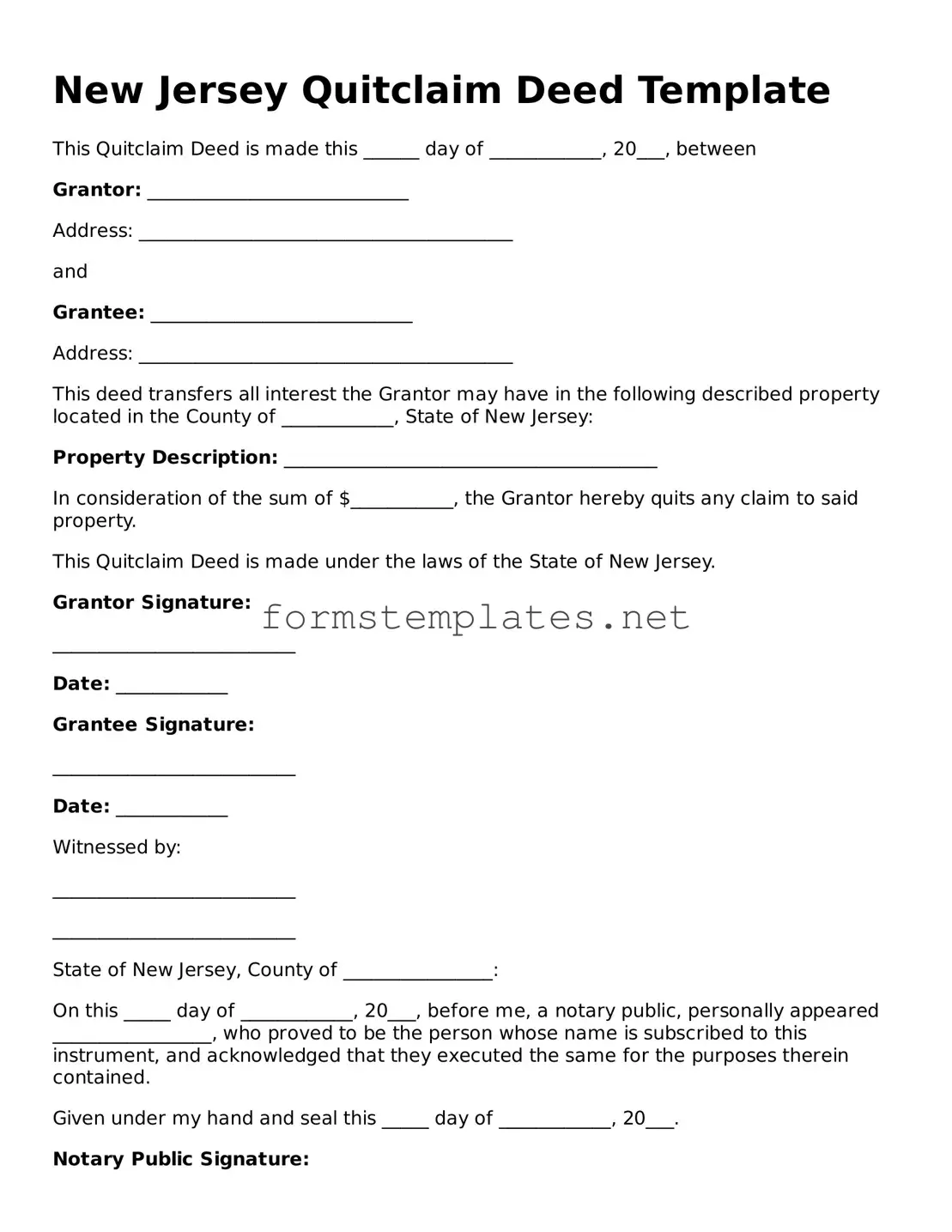New Jersey Quitclaim Deed Template
This Quitclaim Deed is made this ______ day of ____________, 20___, between
Grantor: ____________________________
Address: ________________________________________
and
Grantee: ____________________________
Address: ________________________________________
This deed transfers all interest the Grantor may have in the following described property located in the County of ____________, State of New Jersey:
Property Description: ________________________________________
In consideration of the sum of $___________, the Grantor hereby quits any claim to said property.
This Quitclaim Deed is made under the laws of the State of New Jersey.
Grantor Signature:
__________________________
Date: ____________
Grantee Signature:
__________________________
Date: ____________
Witnessed by:
__________________________
__________________________
State of New Jersey, County of ________________:
On this _____ day of ____________, 20___, before me, a notary public, personally appeared _________________, who proved to be the person whose name is subscribed to this instrument, and acknowledged that they executed the same for the purposes therein contained.
Given under my hand and seal this _____ day of ____________, 20___.
Notary Public Signature:
__________________________
